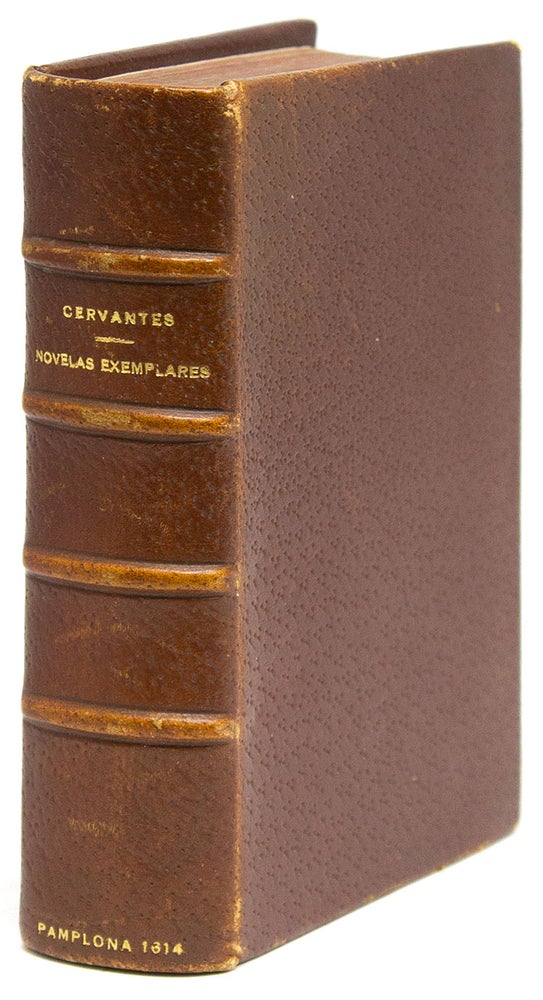Novelas Exemplares.
Pamplona: Nicolas de Assiayn, Impressor del Reyno de Navarra, 1614.
Price: $30,000.00
About the item
Second edition. [xvi], 391, [3] pp. Collation: ¶^8 A-2Z^8 3A-3C^8. 8vo. Early twentieth-century pigskin, spine titled in gilt. Light rubbing to extremities, some toning and spotting to text, small wormhole at inner margin of title-page and following two leaves, light dampstain to margins of first few gatherings. Contemporary inscription on title. Rius 221; Palau 53401; Brunet I, 1754; BM STC Spanish and Portuguese, 1601-1700, 471.
Item #312731
The rare true second edition of Cervantes' Novelas Ejemplares, a collection of 12 novellas inspired by Boccaccio and first published by Robles in Madrid in 1613, between publication of the first and second parts of Don Quixote (1605, 1615).
A Madrid edition of 1614, with the imprint of Juan de la Cuesta and Francisco de Robles was long thought to be the second edition, and is identified as such by Ruis. It is in fact a piracy, variously ascribed to the Lisbon printer Antonio Alvare (vide Astrana Marín) and more recently to the the Seville printer Gabriel Ramos Bejarano (vide Jaime Moll, "Novelas ejemplares, Madrid, 1614: edición contrahecha sevillana").
The present 1614 Pamplona edition is the true second edition, with the privilege from the kingdom of Navarre granted on 11 January 1614. Cervantes' Madrid publisher, Francisco de Robles, had obtained privileges from Castille and Arragón for the 1613 first edition, published in July of that year. He was determined to combat illegal reprintings and sued booksellers in Zaragosa intending to pirate the Novelas (Marín VII, p. 74). But he was unable to stop either the indignity of the 1614 piracy (which used his own name) or this authorized 1614 Pamplona edition, printed by Nicolas de Assiayn.
This edition removes the sonnet of Juan de Solís Mexia printed in the first edition. Assiayn published a second Pamplona edition in 1617.
The 1613 Madrid edition is rare, known only in a handful of copies, and we trace no copies at auction. The 1614 Pamplona edition is likewise uncommon, with OCLC locating 9 complete copies, only 2 of which are in the US (UPenn and University of Chicago), and the only recent auction record for an incomplete copy lacking its title-page.




